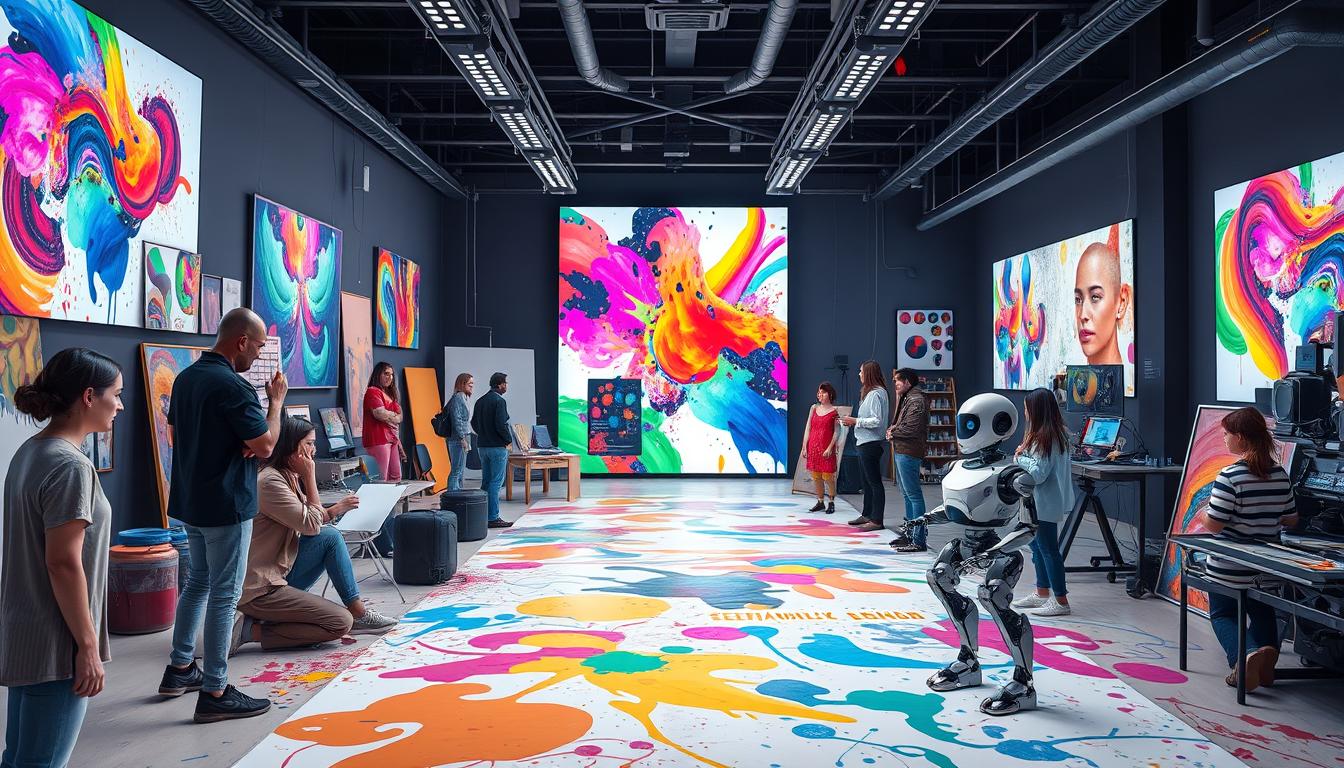The infiltration of AI-generated art into the creative industries has sparked significant transformation, challenging traditional norms across design, visual arts, advertising agencies and publishers. Fuelled by an urgency for growth and innovation, these industries are exploring new frontiers with AI at the helm. Yet, the journey toward the integration of this technology comes with a critical demand for transparency, privacy, and a redefined sense of collaboration within the global market. Bob Liodice, CEO of the Association of National Advertisers (ANA), asserts that forming cross-industry coalitions and shifting the focus from internal to marketer growth is paramount1. Mark Pritchard of Procter & Gamble seconds this notion, envisioning market growth that transcends the traditional battles for market share, advocating for a collective approach in line with shareholder interests1.
As the ANA champions the alignment of marketing agendas through coalitions, significant strides have been made since they initially delved into media transparency eight years ago. With the introduction of the Media and Measurement Leadership Council, comprising around 150 experts, they’re steering the conversation towards optimal business results and C-suite relations1. Notably, areas such as talent satisfaction and inclusive marketing are receiving heightened attention as underinvested domains ripe for development1.
Key Takeaways
- The ANA’s collaboration with cross-industry entities emphasizes market growth and the alignment of marketing strategies1.
- Media transparency has been an eight-year journey, revealing the necessity for tangible action and accountability1.
- Strengthening client-agency relations and senior media executive involvement is critical for future-proofing marketing practices1.
- Constructive engagement with CEOs and the fulfillment of their expectations are reflected in current CMO turnover rates1.
- The focus on talent engagement and satisfaction, along with inclusive marketing, are key areas identified for investment by the ANA1.
- Vitalentum’s platform offers revolutionary AI-generated creative assets, making visual innovation accessible across industries2.
Exploring the Evolution of AI in Creative Spaces
The landscape of creative industries has experienced significant transformation with the integration of artificial intelligence. This AI evolution is not just reshaping existing frameworks but is also forging new pathways in advertising, marketing, and beyond. As AI technologies weave deeper into the fabric of creative processes, they catalyze a dynamic shift towards more efficient, personalized, and innovative outputs.
The Advent of AI in Advertising and Marketing Industries
Advertising and marketing have been among the earliest adopters of AI technologies, harnessing their potential to redefine the terrain. The AI transformation in these sectors enhances targeted campaigns, optimizes spending, and predicts consumer behavior more accurately. Notably, AI’s ability to analyze vast amounts of data allows marketers to deliver content that resonates with diverse audiences, ensuring each campaign achieves its highest potential.
Leveraging AI for Media and Measurement
In the realm of media, AI’s influence is palpable in content creation, distribution, and performance measurement. Advanced algorithms are now capable of crafting personalized viewing experiences, recommending content that aligns with individual preferences. The impact of AI on measurement is profound, providing granular insights into viewer engagement and content efficacy. This data-driven approach promotes a higher degree of accuracy in media planning and buying, facilitating optimized resource allocation and enhanced ROI.
Transparency and Accountability in AI Adoption
As AI systems become more prevalent, the calls for transparency and accountability grow louder. Stakeholders from all corners of the creative sectors are advocating for clear standards that govern AI utilization to ensure ethical practices are upheld. This movement aims to foster trust and encourage more widespread adoption of AI tools in creative spaces, ultimately leading to a more equitable ecosystem that benefits all participants.
| Aspect | Impact | Statistical Highlight |
|---|---|---|
| AI in Advertising | Enhanced targeting and efficiency | Increased campaign ROI3 |
| AI in Marketing | Improved consumer insights | Advanced predictive analytics3 |
| AI in Media | Personalized content distribution | Viewer engagement optimization3 |
The Rise of AI-Generated Art and Its Impact on Creative Industries
As the creative industries continue to evolve, AI-generated art has begun to play a pivotal role in reshaping the narrative of visual storytelling and design. The ability to create unique and diverse visuals that align with specific project goals not only enhances efficiency but also pushes the boundaries of innovative design. As we delve into this new era, platforms like Vitalentum have emerged as game-changers, offering AI tools that allow for the creation of free visuals without the constraints of traditional licensing.
AI and the Reinvention of Visual Storytelling
The integration of AI in visual storytelling has caused a fundamental shift, providing content creators and marketers with AI-generated imagery that can capture nuanced and compelling narratives. It’s been seen that industry coalitions, like the Association of National Advertisers (ANA), underscore this shift by urging marketers to focus on growth strategies and transparent digital communication, rather than short-term objectives1. This is reflected in the ANA’s focus on aligning cross-industry initiatives and addressing the lack of industry transparency that can impact growth potential1.
The Revolutionary Role of AI-Generated Images in Design
Design sectors, particularly those involved in digital communication and game development, benefit immensely from the advent of AI-generated images thanks to platforms like Vitalentum. Unlike traditional stock photos, AI-generated visuals offer originality and a depth of creativity that have become essential in today’s competitive landscape2. Vitalentum’s vast collection spanning numerous themes and genres provides this originality across various categories like e-commerce, marketing campaigns, and social media—catering not only to the needs of big corporations but also to independent game developers and bloggers2.
Vitalentum’s Role in Democratizing Visuals for Creatives
By providing a rich repository of high-quality, AI-generated images that resonate with a diverse range of industries, Vitalentum democratizes access to visuals for creatives of all levels2. Whether it’s for use in video games that captivate players with innovative design or digital advertising campaigns that stand out in a crowded marketplace, Vitalentum’s resources are indispensable. The ease of accessing free visuals through a user-friendly interface ensures that anyone, from influencers to product designers, can enhance their storytelling and engagement2.
FAQ
What is AI-generated art and how is it impacting creative industries?
How are advertising and marketing industries adapting to the advent of AI?
What are the challenges of integrating AI into creative spaces and how is the industry addressing them?
In what ways has AI transformed the field of visual storytelling?
How are AI-generated images revolutionizing design?
What is Vitalentum, and how does it contribute to the realm of creatives?
Source Links
- ANA: Industry Has Not Aligned on Marketers’ Growth Agenda – https://www.adweek.com/agencies/ana-the-industry-has-not-aligned-around-marketers-growth-agenda/
- Vitalentum: The Ultimate Repository of AI-Generated Images – https://quickquotedirect.com/vitalentum-the-ultimate-free-repository-of-ai-generated-images-for-personal-and-commercial-use/
- New Innovations in Assistive Devices for Elderly & Disabled – https://www.rswebsols.com/innovations-assistive-devices-elderly-disabled/



